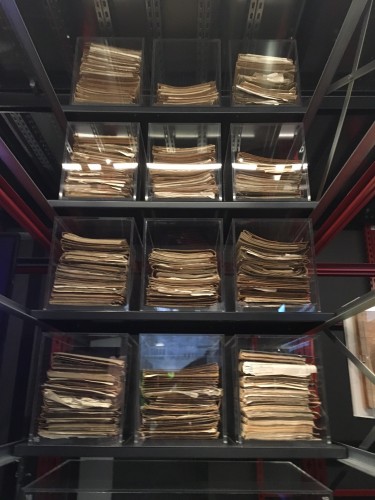Engineering the World: Ove Arup and the Philosophy of Total Design

Engineering the World: Ove Arup and the Philosophy of Total Design
Victoria & Albert Museum, London
June 18 – November 6, 2016
From May 18 through November 6, 2016, the Victoria and Albert Museum staged its Engineering Season—a new museum program that celebrated the field of engineering design from small-scale projects to the large-scale infrastructure that transforms today’s cities. As part of this larger program, the V&A organized Engineering the World: Ove Arup and the Philosophy of Total Design, on view from June 18 through November 6, 2016. Co-curated by Zofia Trafas White and Maria Nicanor, the exhibition focused on the Danish-British engineer Ove Arup (1895-1988), often cited as the most influential architectural engineer of the twentieth century.

The display functioned as a retrospective of Arup’s work, including both projects executed by the engineer himself and by his firm of the same name. Guided by Arup’s writing and archive, which comprised a sort of portrait of the engineer, the exhibition showcased his philosophy of “total design.” According to Arup, total design means wedding the professions of architecture and engineering from the birth of a project to its completion. By focusing on the close collaboration between architects and engineers, the exhibition told the exciting stories behind now-famous architectural projects on which Arup and his firm worked, such as the London Zoo’s Penguin Pool (1934), the Sydney Opera House (1957-73), the Pompidou Centre in Paris (1971-77), and the Menil Collection in Houston (1982-87). Such stories revealed, for example, the complex set of mathematical calculations that determined the Penguin Pool’s playful interlocking ramps, and the enormous amount of analytical work that went into creating a buildable design for the Sydney Opera House’s iconic roof. Through Arup’s interspersed doodles and comic ephemera, viewers got a glimpse of the man himself. As well, the exhibition showcased lesser-known Arup projects such as his wartime air raid shelters and research into bomb-proof housing.
In addition to tracing Arup’s career, the exhibition succeeded in highlighting the silent achievements of engineers, whose work is often overshadowed by that of architects and designers. The show thus revealed the engineer’s critical creative function in designing our world for an audience that either assumes that engineers occupy a backseat role in the design process or do not think about engineering at all. Accordingly, the exhibition’s mode of display aimed to visualize engineering for viewers who do not necessarily understand what exactly an engineer produces. The exhibition presented the visual components of this work. For example, one of the first objects that the visitor encountered was a 1:1 scale model of a gerberette beam. Conceived and designed by Arup engineer Peter Rice, the beam comprises the structural element that enables the Pompidou Centre’s most distinctive design feature: its façade composed of visible pipes, ducts, and wires that contain the building’s services.

Overall Engineering the World: Ove Arup and the Philosophy of Total Design was thoroughly successful in its aims. It showcased a coherent timeline of Arup’s career and evaluated his legacy through projects undertaken by his firm. Moreover, it succeeded in visualizing abstract ideas about engineering and, in so doing, introduced new audiences to architectural engineering. One of the exhibition’s most dynamic components was the display itself: London-based Dyvik Kahlen Architects created a climbable steel shelving system that was fitted into the gallery, allowing visitors to walk up and onto this structure as they explored the material. This was, perhaps, the ideal way to display the exhibition’s many archival materials that engagingly illustrated how each aspect of engineering adds up to a final finished project. Furthermore, it was a fitting way for the V&A to display the first major exhibition devoted to engineering, perhaps setting a precedent for future exhibitions of such material.